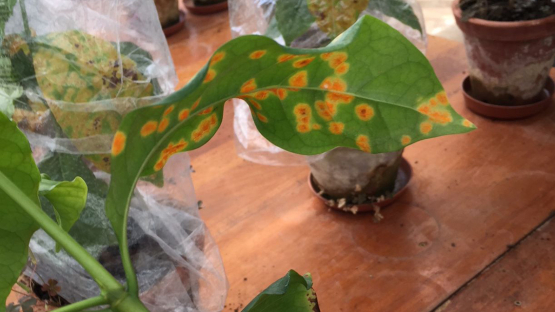The coffee industry generates approximately US$ 100 billion per year. But with climate change and the changing weather patterns that come with it, the conditions that were once suitable for coffee plants are deteriorating in many traditional growing areas; in addition, incidence of coffee leaf rust ꟷ a disease that kills coffee trees ꟷ is on the rise.
The IAEA, in partnership with the Food and Agriculture Organization of the United Nations (FAO), has been working with national experts to alleviate the stress of coffee leaf rust on coffee trees using nuclear techniques. A first for the IAEA, experts are being trained to use plant breeding techniques to develop coffee varieties that are resistant to the fungus that causes coffee leaf rust. This training is part of a five-year Coordinated Research Project where scientists from six countries are conducting research on disease resistant coffee plant varieties.
“Growers have been noticing the effects of climate change on their coffee crops resulting in lower harvests and the fact that erratic rainfall, which a lot of these coffee-producing areas are experiencing, favours the spread of disease,” said Ivan Ingelbrecht, Head of the Plant Breeding and Genetics Laboratory at the Joint FAO/IAEA Division of Nuclear Techniques in Food and Agriculture. “The arabica variety of coffee is usually grown in cooler climates, on the slopes of mountains in shaded areas, but now we are seeing the temperatures increase as you go up the mountain, which has an impact on the spread of diseases like coffee leaf rust.”







